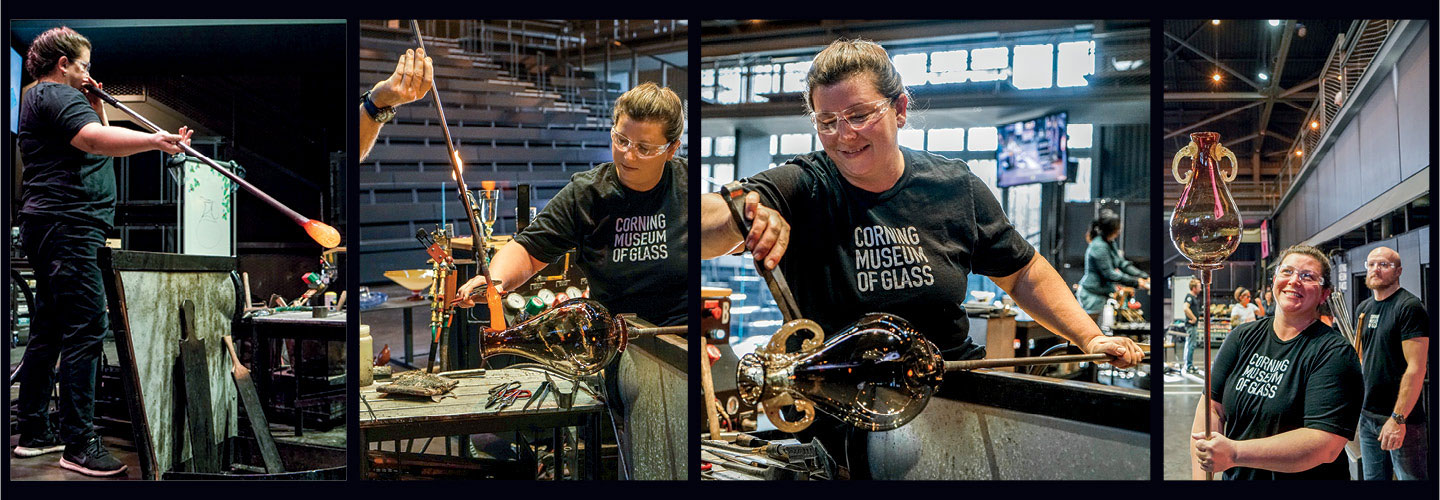Scholastic Art: What is your job?
Catherine Ayers: I am a gaffer, which is also known as a glassblower. I work for the Corning Museum of Glass, in Corning, New York. At the museum, I demonstrate the process of glassblowing to museum visitors.
SA: What kinds of objects do you make?
CA: Typically, for a glassblowing demonstration, I make a vessel. That’s an object—like a bowl, pitcher, or vase—that is used to hold something. I usually add a whimsical element to my vessels, such as sculpting the handles of a glass-blown pitcher to look like elephant trunks.
SA: What is your working process?
CA: I start by heating up the tip of the pipe—which is like a long, metal straw—in the furnace. Melted glass will only stick to hot metal. When the tip of the pipe is cherry red, I know it’s hot enough. I then dip the hot tip into the melted glass and keep spinning it to gather some glass. I can’t gather too much at one time or it will drip off. After gathering a bit of glass, I remove the tip of the pipe from the furnace and blow into the other end to create a starter bubble in the glass. I have to let the glass cool for a few seconds, and then I gather more glass and blow again to make the bubble bigger. I do that a few times until I have the amount of glass I need. Then I shape the glass into the object I’m making.

